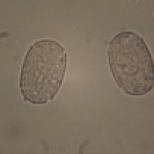The NDB expects students to have a broad understanding of the local forage and science of pollination. The exam includes identification of flowers, as well as a discussion on the characteristics of identified plants, such as their flowering period, availability of pollen and flower structure. The exam may include discussion of the portfolio of plants. Field Studies Centres, Wildlife Trusts, and local botany groups provide a good range of training course and opportunities to practice identification. Candidates will benefit from drawing diagrams of the plant/flower structure and viewing samples under a dissecting microscope. Spending time watching bees and other insects on plants of interest will improve the understanding of the start time and duration that plants produce nectar & pollen.
The exam also includes discussion/comment on honey samples. Mono-floral honey is available in the UK and is readily identifiable in many cases due to its physical properties. Assisting a honey judge provides many opportunities to assess honey samples, and candidates may find such opportunities at local shows, county events & the National Honey Show.
Pollen identification in both honey & from flowers should allow candidates to make assessments of the floral sources of provided specimens. Building a pollen slide library provides an ideal method to understanding the typical (and often family) characteristics of pollen. Candidates are encouraged to undertake such preparations well in advance of the exam, and this may have already been initiated by those who have studied the BBKA Microscopy certificate.
See also the pages on Candidate Guidance along with Entomology, reading and interpreting research Practical Exam preparations and https://national-diploma-beekeeping.org/front-page/preparation-for-candidates-microscopy/















